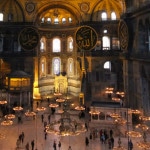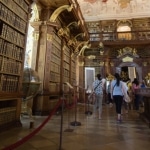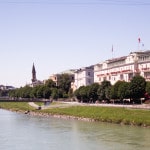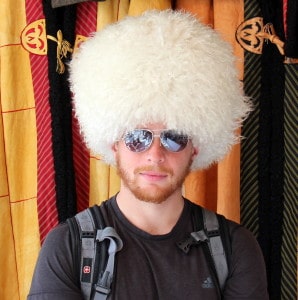The Kutna Hora Bone Church:
Life, Death, and Silver in Bohemia
At first glance, Kutna Hora seems like any other once-prosperous European town. Big churches, beautiful cobblestone streets, and a central square that serves as the heart of the city and the center of life. If you haven’t ever heard of it before, your initial impression of the town might be that it seems pretty and quaint and nothing particularly out of place for a traveler looking for a bit of ‘Old Europe’ to experience. You would be correct.
You would also, as it turns out, be missing the most famous and photogenic and delightfully gruesome part of Kutna Hora and no doubt the thing that keeps tourists coming in droves to this otherwise quiet corner of Bohemia: the Sedlec Ossuary.
On a quiet side street outside of the city center, inside an otherwise unremarkable looking chapel, lie the bones of more than 40,000 people arranged evocatively by František Rint in 1870 into a piece of art equal parts impressive and unsettling. The grounds of the Sedlec Ossuary were sprinkled with the dirt of Golgotha, you see, and for the average 17th century Bohemian this was about as close as you would ever get to the Holy Land. People were dying to get in. (I’m so so sorry for that.)
Kutna Hora was a royal city, with enormous wealth fueled by the silver mines that dotted the hills nearby and made the town one of the economic and political centers of Bohemia in the 14th and 15th centuries. While it may not seem so grand or grown now, at the time it rivaled even capital city Prague for importance – and thus needed all the same construction of cathedrals and marvelous monuments that any rich town should support. While the Church of St. James and St. Barbara’s Cathedral stand tall over the town of Kutna Hora itself, little Sedlec a few kilometers away was the site upon which a small Cistercian monastery was built (and where it would later burn down in 1421 – no word on whether that contributed any bones to the eventual ossuary when it was reconstructed).
I know all these things now only through the likes of Wikipedia and UNESCO (which lists Kutna Hora as a site important to World Heritage). Like most tourists – and like you yourself will most certainly do if you ever visit – I read all these things on a helpful information sheet that the Kutna Hora Bone Church hands out and then immediately forgot them because, well, there were more alarming things at hand.
I often feel like I take on the role of tacit tour guide while traveling with friends from the US, and Kutna Hora was no exception to this. As much as it might have been hard (although, actually, would it?) to convince Jess and Kevin to hop on a train for an undisclosed experience on the outskirts of Prague, I’m nearly certain it would have been worth the effort to see the look on their faces as they first walked into the Ossuary. Bone candlesticks, bone pyramids, and even a chandelier that uses at least one of every single bone in the human body. It makes me wonder who the first modern tourist or first Lonely Planet author was to wander through Kutna Hora, and to stumble across ANOTHER FREAKING CHAPEL that they had to force themselves to go inside. No doubt whoever they were, they certainly got their money’s worth.
Essential Information
Getting to Kutna Hora
Trains run about once per hour from Prague Hlavi Nadrazi station to Kutna Hora. Kutna Hora Mesto station is near the Old Town, while Kutna Hora Hlavi Nadrazi station is closer to the bone ossuary. Trains cost around 104 CZK (~$5) each way and the journey takes around an hour and fifteen minutes.
Busses depart from Florenc bus station in Prague to Kutna Hora, and arrive to a station on the road between the old town and bone church. Busses take about a half hour longer than trains, but the fare is only 70 CZK (~$3) if you’re on a really backpacker budget.
Tourism in Kutna Hora
Tickets to the Kutna Hora Bone Church are 90 CZK Adults / 60 CZK Students (~ $4/$3). Combination tickets are available for other attractions in town such as the the Cathedral of Assumption of Our Lady and Saint John the Baptist, the Church of St. Barbara and the GASK (The Gallery of Central Bohemia) – the whole lot runs 280 CZK / 190 CZK. If you just want to have a glance inside the Cathedral of Assumption, though, you can walk in the door and read a bit of the history
Alternatively, an excursion with GetYourGuide is slightly more expensive. It includes transportation and entrance to the Kutna Hora Ossuary and St. Barbara’s Church, a combined value of about $17. If the different in prices is worth it to you for a guide and skipping the logistics, it represents a good deal. Otherwise, you can do it independently with a bit of planning.
Where to Stay in Kutna Hora
While there are budget hotels in Kutna Hora, most people will want to stay in Prague and visit Kutna Hora as a daytrip. The Prague Square Hostel is extremely central and, were I looking for a hotel in Prague’s Old Town, this is the place I would choose.












This place has been on the list of places to visit for so long! looks awesome
It’s an unusual one, and definitely worth the trip. Enjoy!